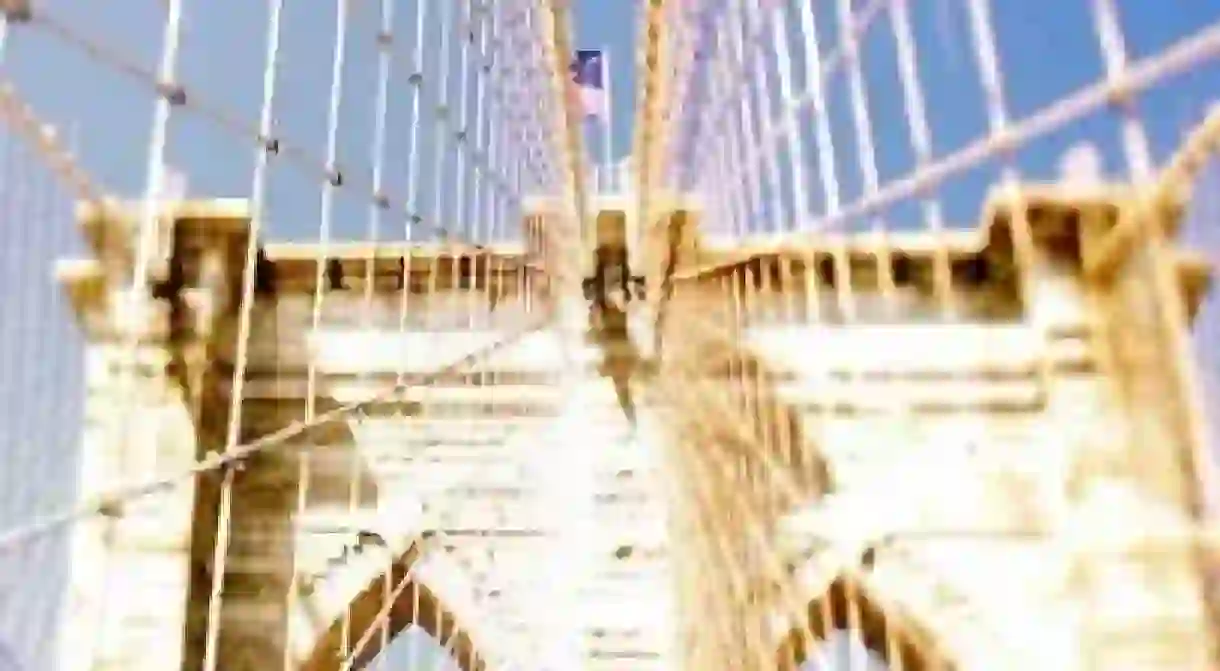Top 12 Historical Events That Shaped NYC

New York City has a rich history. Believe it or not, there was a time when New York was not filled with huge buildings – and there was even a time when it was not called ‘New York.’ But NYC is the way it is today due to its past, and we define ourselves as New Yorkers based on these historical events.

Giovanni da Verrazzano’s Expedition
Bridge, Cinema, Park

Henry Hudson’s Expedition
Having worked for the Dutch and the English at different times, Henry Hudson explored North America with the hopes of finding a northwestern passageway that would lead to the Asia. After two attempts with the British, Hudson was commissioned by the Dutch East India Company. During this expedition in 1609, Hudson and his crew sailed to New York and up a river to present-day Albany. This river is now named after him: the Hudson River.
Dutch Establishment of New Netherlands
Established during the Dutch Golden Age in the 17th century, New Netherlands was a Dutch colony in the New World. It contained New York, Connecticut, New Jersey, and Delaware. New Netherlands was created to gain a strong foothold in the important New World fur trade. It was during this time that Peter Minuit, the director of the Dutch West India Company, bought the island of Manhattan from the natives. The effects of this colonization is still seen in location names, which combined Native American and Dutch languages, like Manhattan and Hackensack.
British Establishment of New York
In 1664, English King Charles II promised New Netherlands to his brother, the Duke of York, even though the territory was still under Dutch control. When warships approached New Amsterdam, director-general Peter Stuyvesant conceded the colony to the English, who renamed the territory “New York” after the Duke. The Dutch recaptured New York in 1673 and renamed it New Orange, but they returned it to the British in 1674 to regain control of Suriname.

Brooklyn Bridge Opening
Bridge

Statue of Liberty Opening
Building

Ellis Island Immigration
From 1892 to 1954, Ellis Island was the gateway for immigrants coming to the U.S.’s east coast. On Ellis Island, immigrant applications were processed and people were either welcomed into the U.S. or sent back to their homelands. Approximately 12 million people had been processed through Ellis Island, and about one third of the current U.S. population has ancestors who passed through Ellis Island. Ellis Island is currently a museum that is connected with the Statue of Liberty.

New York World’s Fair of 1939-1940
Early world’s fairs focus extensively on industrialization, and they showed the importance of scientific advances and technology. This, however, changed when the World’s Fair was hosted in New York City from 1939 to 1940, where the theme was “Dawn of a New Day.” Countries from around the world participated in it, and the fair attracted about 44 million people. Unlike earlier world’s fairs, the 1939-40 New York World’s Fair focused on culture and society rather than technology. One exhibit was a time capsule that included a Mickey Mouse Watch, cigarettes, and writings by Einstein.
Headquarters of the UN
Building

‘I Love New York’ Slogan
In 1977, the ‘I Love New York’ logo became the symbol of an advertising campaign for tourism in New York City. The image came from Milton Glaser, a graphic designer, whose work has continued throughout New York. In tourist shops and on signs throughout the city, the ‘I Love New York’ slogan remains prominent to this day. It is impossible to walk through Times Square without seeing this icon.

1993 Bombing of the World Trade Center
On February 26, 1993, a group of terrorists detonated a truck bomb beneath the North Tower of the World Trade Center. Their goal was to have the North Tower collide with the South Tower, resulting in the deaths of thousands. Their plan failed, but six were killed and about one thousand were injured. A memorial to the six who lost their lives was set by a pool in the North Tower, but this was destroyed during the attack of September 11, 2001.
September 11, 2001
Memorial, Museum














